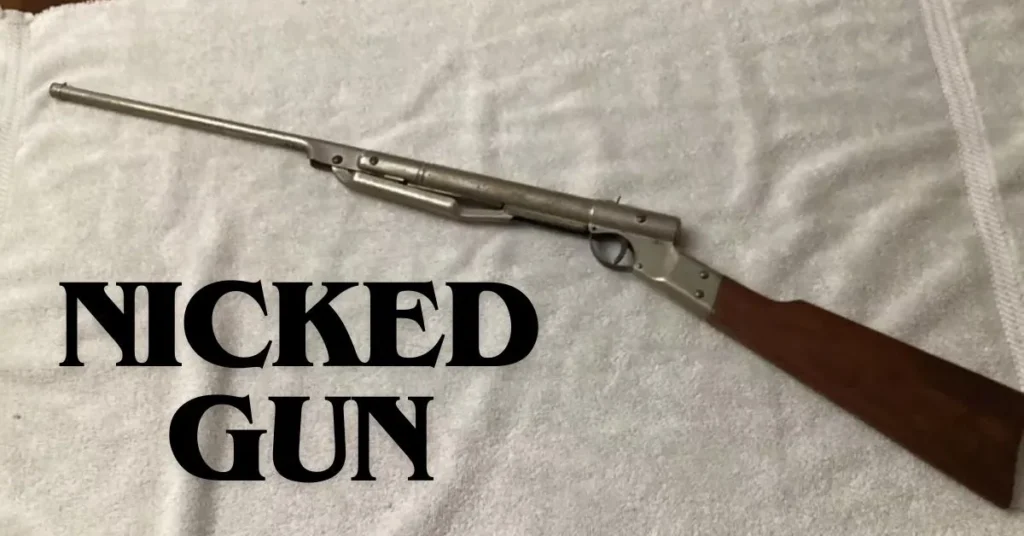In today’s world, the term nicked gun refers to a firearm that has been stolen or acquired illegally. These weapons often end up in the wrong hands, contributing to crime and violence. Understanding the phenomenon of nicked guns is crucial for anyone interested in law enforcement, personal safety, or simply staying informed about current issues.
What is a Nicked Gun?
A nicked gun is essentially a stolen firearm. The term “nicked” is British slang for something that has been stolen or taken without permission. When a gun is nicked, it can be difficult to trace and often falls into the hands of criminals. This makes it a serious concern for law enforcement and the general public alike.
The process of a gun becoming nicked typically involves theft from legal owners, gun shops, or even during transportation. Once stolen, these firearms are often sold on the black market, making them accessible to individuals who might not be able to obtain them legally.
The Impact of Nicked Guns on Society:
Nicked guns pose a significant threat to public safety. Because they are untraceable, they are often used in criminal activities such as robberies, assaults, and even murders. The inability to track these weapons makes solving crimes more challenging for law enforcement agencies.
Furthermore, the presence of nicked guns in a community can increase the overall level of violence and fear. Innocent people can become victims of crimes involving these weapons, and the illegal gun market can fuel other illicit activities. The ripple effect of nicked guns extends beyond individual incidents, impacting the broader community and society.
How Guns Get Nicked:
There are several ways in which guns can get nicked. One common method is through residential burglaries, where thieves specifically target homes known to contain firearms. Gun shops are also prime targets, with thieves breaking in to steal multiple weapons at once. Another method involves the theft of guns during transportation, whether from delivery trucks or shipping containers.
In some cases, individuals working within the legal gun trade might divert firearms for illegal sale. Corruption and lapses in security can lead to guns being nicked even before they reach legitimate buyers. Understanding these methods is essential for developing strategies to prevent gun theft.
Preventing Gun Theft:
Preventing gun theft requires a multifaceted approach. For individual gun owners, securing firearms in a safe or locked cabinet is a basic but effective measure. Installing security systems, such as alarms and cameras, can also deter thieves. It’s important to stay vigilant and report any suspicious activity in your neighborhood.
Gun shops and transportation companies must also take stringent measures to prevent theft. This includes implementing robust security protocols, conducting regular inventory checks, and ensuring that employees are thoroughly vetted. By taking proactive steps, both individuals and businesses can help reduce the incidence of nicked guns.
The Role of Law Enforcement:
Law enforcement plays a crucial role in combating the issue of nicked guns. Police departments work to recover stolen firearms and apprehend those responsible for theft. They also conduct undercover operations to infiltrate and dismantle illegal gun trafficking networks.
Collaboration between local, state, and federal agencies is essential for addressing the problem on a larger scale. Sharing information and resources can help track down nicked guns and bring perpetrators to justice. Public awareness campaigns can also educate citizens about the importance of securing their firearms and reporting theft.
Legal Implications of Possessing a Nicked Gun:
Possessing a nicked gun carries serious legal consequences. In most jurisdictions, being found with a stolen firearm can result in severe penalties, including hefty fines and long prison sentences. The law views the possession of a nicked gun as a serious offense due to the potential for these weapons to be used in crimes.
It’s important for individuals to be aware of the origins of any firearm they purchase. Buying a gun from an unreliable source can inadvertently lead to possession of a nicked gun. Always ensure that firearms are purchased through legal, reputable channels and that proper documentation is obtained.
The Black Market for Guns:
The black market for guns is a shadowy underworld where nicked guns are bought and sold. This illegal trade thrives on the anonymity and untraceability of stolen firearms. Black market transactions often involve other illegal activities, such as drug trafficking and organized crime.
Law enforcement agencies continually work to disrupt the black market by conducting sting operations and monitoring suspected traffickers. However, the demand for nicked guns persists, driven by those who cannot legally acquire firearms or seek to avoid regulatory scrutiny. Tackling the black market requires ongoing effort and international cooperation.
Technology and Tracking Stolen Guns:
Advancements in technology offer new tools for tracking and recovering nicked guns. Microstamping, for instance, involves imprinting a unique code on a firearm’s components, making it easier to trace if stolen. GPS tracking devices can also be embedded in firearms to locate them if they are taken.
Databases that record the serial numbers of stolen guns allow law enforcement to cross-reference recovered weapons with reports of theft. These technological innovations, combined with traditional investigative methods, enhance the ability to combat the proliferation of nicked guns.
The Importance of Public Awareness:
Raising public awareness about nicked guns is vital for prevention and recovery efforts. Educational programs that inform gun owners about proper security measures and the consequences of gun theft can make a significant difference. Community initiatives that promote responsible gun ownership and encourage reporting of suspicious activities contribute to a safer environment.
Public awareness campaigns can also highlight the impact of nicked guns on society, fostering a collective effort to address the issue. By staying informed and engaged, individuals can play a part in reducing the incidence of gun theft and the availability of stolen firearms.
Conclusion: Addressing the Issue of Nicked Guns
The problem of nicked guns is complex and multifaceted, requiring concerted efforts from individuals, businesses, and law enforcement agencies. By understanding how guns get stolen, taking preventive measures, and supporting law enforcement initiatives, we can work towards reducing the prevalence of nicked guns.
It’s crucial to remain vigilant and proactive in addressing this issue. Whether you’re a gun owner, a business involved in the firearm trade, or a concerned citizen, your actions can contribute to a safer community. By focusing on prevention, awareness, and collaboration, we can tackle the problem of nicked guns and create a more secure environment for everyone.







